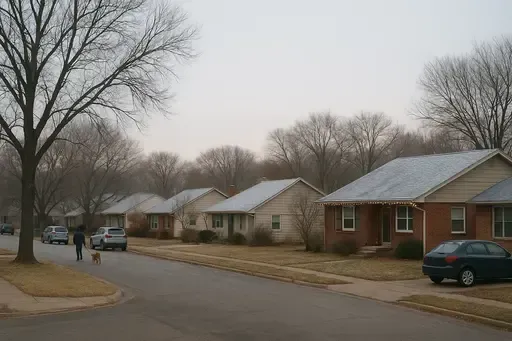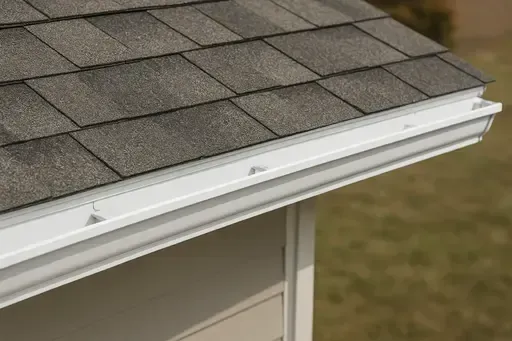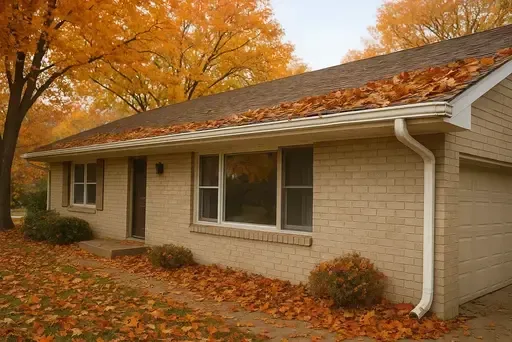Water in the basement after storms: Is it gutters, grading, or drains?
Last spring's storms hit Wichita hard. They didn't just bring lightning and hail—they left hundreds of homeowners with water in their basements. After every big storm in Kansas, local water damage companies get busy. Homeowners call because they found water where it should never be.
If you're dealing with a wet basement right now, you're not alone. This happens all over Wichita. It doesn't matter if you live in College Hill or West Wichita. Water in basement problems affect homes everywhere in our city.
Here's the good news: Most basement water issues come from just three things. Bad gutters, wrong yard grading, or broken drains. Even better—once you find the real problem, you can usually fix it before the next storm hits.
This guide will help you figure out what's causing your basement flooding. By the end, you'll know exactly what to do to keep your Wichita home dry when the next storm rolls in.
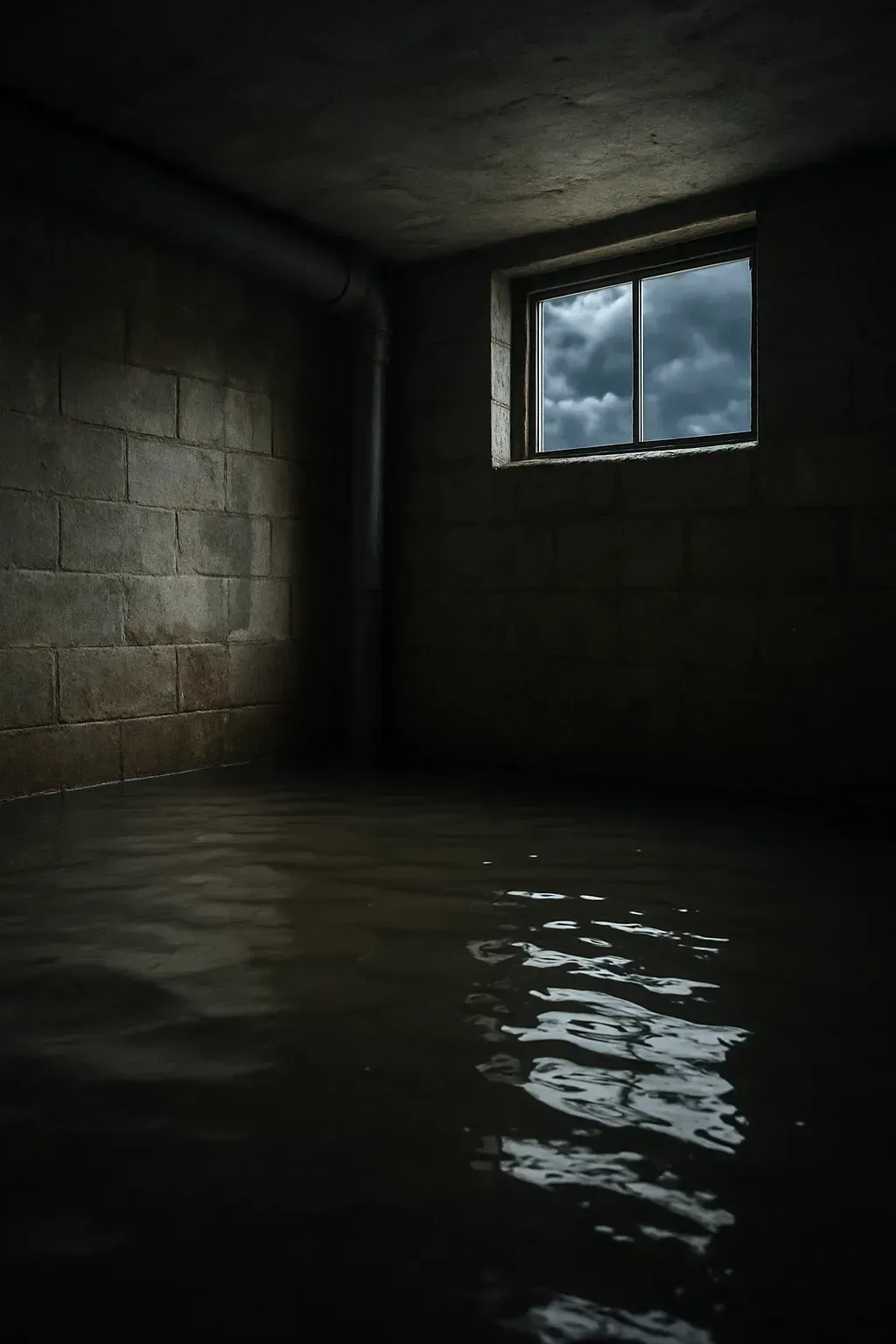
Understanding Wichita's Unique Water Challenges
Weather Patterns That Create Problems
Wichita gets hit with some serious storms. Our worst weather happens from March through June. That's when we see the biggest thunderstorms, hail, and sometimes tornadoes.
We get about 30 inches of rain each year. But it doesn't come slowly. Kansas storms dump a lot of water fast. Your gutters and drains have to handle way more water than they do in other states.
Remember the storms in May 2022? Or the flooding we had in 2019? These big weather events show us why basement water problems are so common here in Wichita.
Local Soil and Geographic Factors
Wichita sits on clay soil. Clay doesn't drain well. When it gets wet, it swells up. When it dries out, it shrinks. This constant change puts pressure on your foundation. It can crack basement walls and let water in.
We're also close to the Arkansas River. This affects how water moves under our city. Some neighborhoods have higher groundwater than others.
The flat prairie around Wichita means water doesn't run off as fast as it does in hilly areas. When we get heavy rain, water sits longer. This gives it more time to find ways into your basement.
The Three Main Culprits: A Diagnostic Guide
Gutter Problems: Signs and Solutions
Common Issues in Wichita Homes:
Bad gutters cause most basement water problems. In Wichita, we deal with cottonwood trees that drop seeds everywhere. These seeds clog up gutters fast. We also get hail storms that dent and crack gutters.
Many older homes have gutters that are too small for Kansas storms. When heavy rain hits, water spills over the sides instead of flowing to the downspouts.
How to Tell if Gutters Are Your Problem:
Walk around your house after a storm. Look for these signs:
- Water stains on your foundation walls
- Mud splashed up on your house siding
- Gutters that overflow during rain
- Water pooling right next to your foundation
- Rust or holes in your gutters
Fixing Gutter Problems:
Clean your gutters twice a year - spring and fall. Remove all the leaves and seeds. Check for loose brackets and holes.
If your gutters are too small, upgrade to 6-inch gutters. They handle heavy rain better than 5-inch ones. Aluminum gutters work well in Kansas because they don't rust like steel.
Make sure downspouts drain water at least 6 feet away from your house. Add extensions if needed. This keeps storm water away from your basement walls.
Grading Problems: The Foundation Issue
Why Grading Matters in Wichita:
Your yard should slope away from your house. This is called proper grading. When the ground slopes toward your foundation, rainwater flows straight to your basement walls.
Wichita's clay soil makes grading problems worse. Clay holds water instead of letting it drain away. If water sits against your foundation, it will find a way into your basement.
Many older Wichita neighborhoods have settled over time. Houses built 30+ years ago often develop grading problems as the soil shifts.
How to Check Your Grading:
After a rain storm, walk around your house. Look for puddles next to your foundation. Water should flow away from your house, not toward it.
Get a level from the hardware store. Put one end against your foundation and check the slope. The ground should drop at least 6 inches over the first 10 feet away from your house.
Fixing Grading Issues:
Small grading problems are DIY fixes. Add soil near your foundation and slope it away. Use clay soil - it packs down better than sand.
Big grading problems need professional help. Contractors in Wichita charge $1,500-$5,000 depending on how much work is needed. Always get permits through the City of Wichita for major grading changes.
Drain Problems: When Systems Fail
Common Drain Issues:
Foundation drains are pipes that carry water away from your basement. Older Wichita homes often have clay drain pipes that crack or get clogged with tree roots.
Sometimes the problem isn't your drains - it's the city storm sewers. During heavy rains, city drains can back up. This pushes water into your basement through floor drains.
How to Tell if Drains Are the Problem:
Water comes up through your basement floor during storms. This usually means drain problems, not gutter or grading issues.
You might see water backing up in basement floor drains. Or water might seep through basement walls even when gutters and grading look good.
Drain Solutions:
Call a plumber to camera inspect your foundation drains. This costs about $200-$400 in Wichita but shows exactly where the problem is.
Interior drain systems cost $3,000-$8,000 for most Wichita homes. Exterior drain repair costs more but lasts longer.
Check with your insurance company. Some policies cover sudden drain failures but not gradual problems. Keep records of when water problems started.
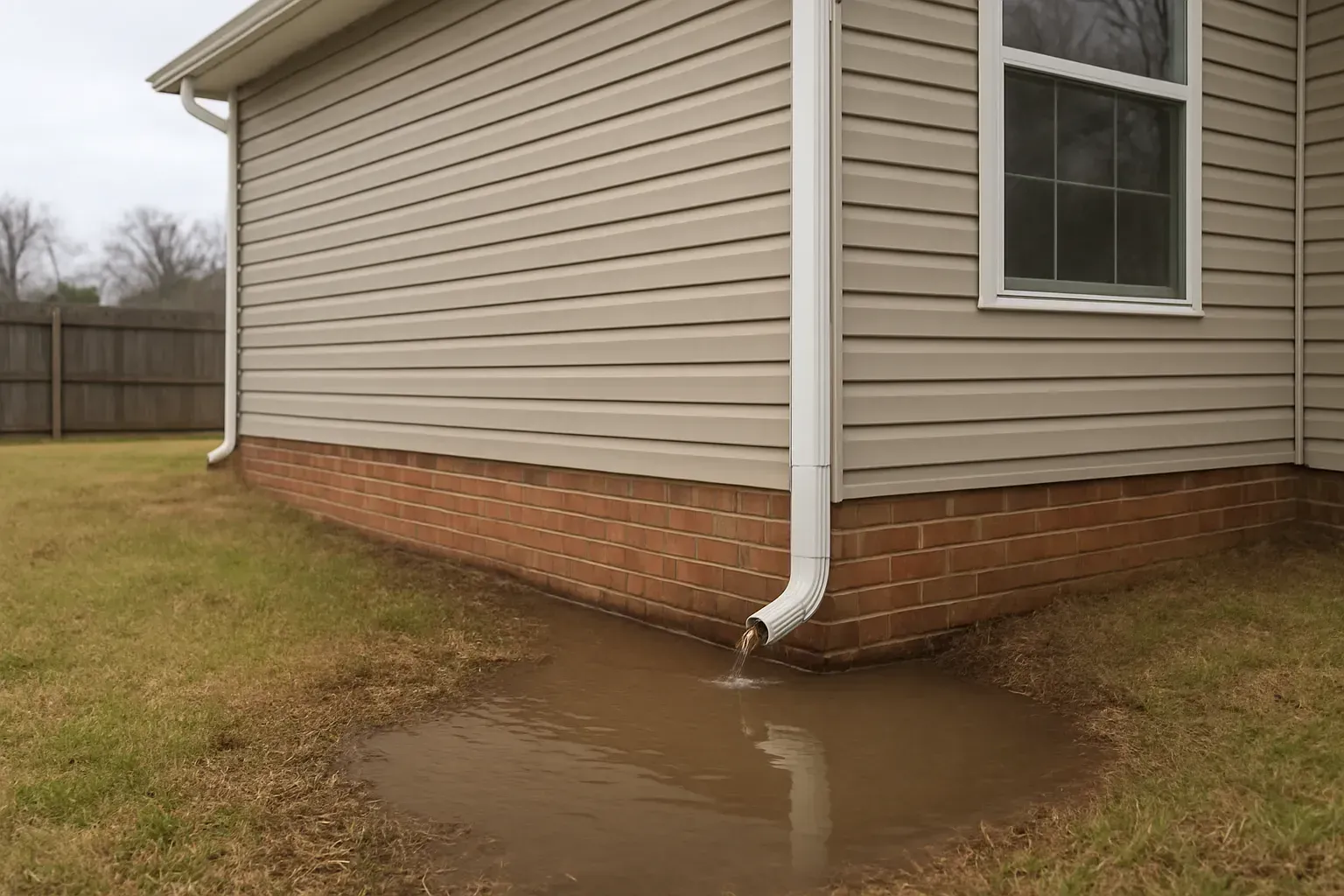
Neighborhood-Specific Considerations
High-Risk Areas in Wichita
Some Wichita neighborhoods get more basement water problems than others.
College Hill has big, old trees and clay sewer lines from the 1950s. Tree roots clog the drains. The mature trees also drop tons of leaves that block gutters.
Riverside sits in a low spot near the Arkansas River. When we get heavy rains, water has nowhere to go. Many homes here flood during big storms.
Central Wichita neighborhoods built before 1980 often have foundation problems. The clay soil has shifted over 40+ years. This creates cracks that let water in.
Newer subdivisions in West Wichita usually have better drainage systems. But some developers cut corners on grading. Check your yard slope even in newer homes.
Prevention Tips by Home Type
Ranch homes: Check gutters more often. Single-story homes get more leaves and debris.
Split-level homes: Watch the lower level carefully. It's closer to ground level where water collects.
Homes with walkout basements: Make sure the door area drains away from the house. Add a drain if water pools there.
When to Call Professionals vs. DIY Solutions
Easy Fixes You Can Do:
- Clean gutters and downspouts
- Add gutter extensions
- Fill small low spots with soil near your foundation
- Clear debris from window wells
Call a Professional When:
- Water keeps coming back after you fix gutters and grading
- You see cracks in your foundation walls
- Water comes up through your basement floor
- You need major yard regrading
Choosing Wichita Contractors:
Ask these questions: Are you licensed? Do you have insurance? Can you pull city permits? Get three quotes. Check Better Business Bureau ratings.
Best Timing:
Fix problems in late summer or fall. Spring is busy season - contractors charge more and take longer to schedule.
Conclusion and Next Steps
Most basement water comes from three places: bad gutters, wrong grading, or broken drains. The key is finding which one is your problem.
Don't wait for the next storm to hit Wichita. Water damage gets worse over time and costs more to fix.
Start with the simple checks in this guide. If you still have water problems, call a local professional. Your dry basement is worth the investment.
For more help with your Wichita home's water problems, contact a licensed contractor today.

